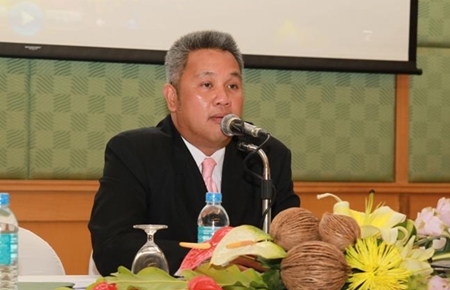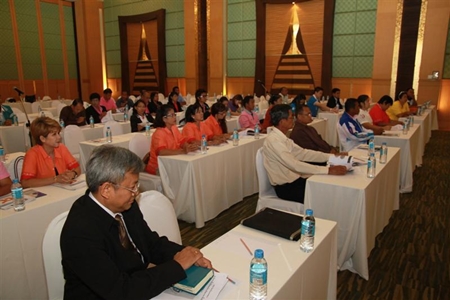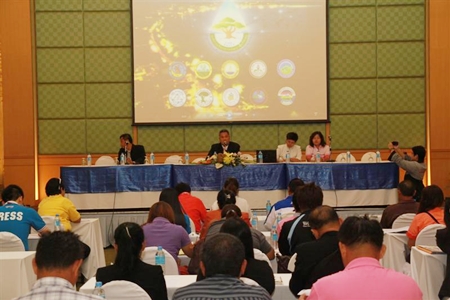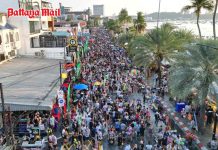National budget appropriators chopped nearly 40 percent off Pattaya’s anticipated 10-year, 15 billion baht budget to transform the area into a special “greenovative tourism” zone and have given the city only 3 percent of that for 2013.
Thaweepong Wichaidit, manager for the Pattaya Special and Adjacent Areas Office, told bureaucrats meeting at the A-One Royal Cruise Hotel Sept. 25 that two years have been cut from the decade-long windfall Mayor Itthiphol Kunplome and other area politicians were hoping for and that funds will continue to only trickle out to them.
 Thaweepong Wichaidit.
Thaweepong Wichaidit.
The Designated Areas for Sustainable Tourism Administration (DASTA) master plan approved in August 2011 called for 15 billion baht in funding over 10 years for 132 projects in Pattaya and surrounding districts. In its latest budget deliberations, the Cabinet axed 56 projects and cut the total package by 38.5 percent to 9.2 billion baht over eight years.
Thaweepong said projects cut were considered low in potential, under the jurisdiction of other agencies, and did not fit the goal of developing the area for “green” tourism.
The Cabinet also left the door open for additional cuts by continuing to apportion only small percentages of the overall package. For 2012, the government gave Pattaya only 135 million baht of the 15 billion baht plan – about 1 percent. For 2013, the government only will give Pattaya 299 million baht of the reduced packaged, or about 3 percent.
The projects approved for 2013 center around transportation, with the anticipation that Thailand will join the Association of Southeast Asian Nations Economic Community in 2013. Among the funded items are those dealing with bicycle transport.
Set up by a 2003 royal decree, DASTA was given a mission to integrate and oversee tourism development in areas designated to have superb natural environments, cultural and traditional importance and have been developed for tourism purposes. Among the first projects approved were Koh Chang National Park, the Chiang Mai Night Safari, Koh Lanta, Koh Samet and the Nongteng-Chakkarat forest in Nakhon Ratchasima.
With its sprawling nighttime industry and many environmental problems, Pattaya’s bids for DASTA status – and the millions in baht that come with it for mayoral pet projects – were repeatedly turned away. But in July 2008 Bangkok officials conceded, admitting Pattaya formed a “distinctive” area for international tourism and could retain its status as a draw for foreign currency if developed properly.
Thus began more than three years of discussions and proposals that culminated in 29 public hearings and private meetings and the March 2009 designation of a 928 sq. km. zone comprising Pattaya and the eight districts.
Politicians hoping they finally found someone to bankroll all their projects submitted nearly 15 billion baht in proposals. DASTA initially approved 34 of those for the first year, but national budgeters cut that to just 17.






